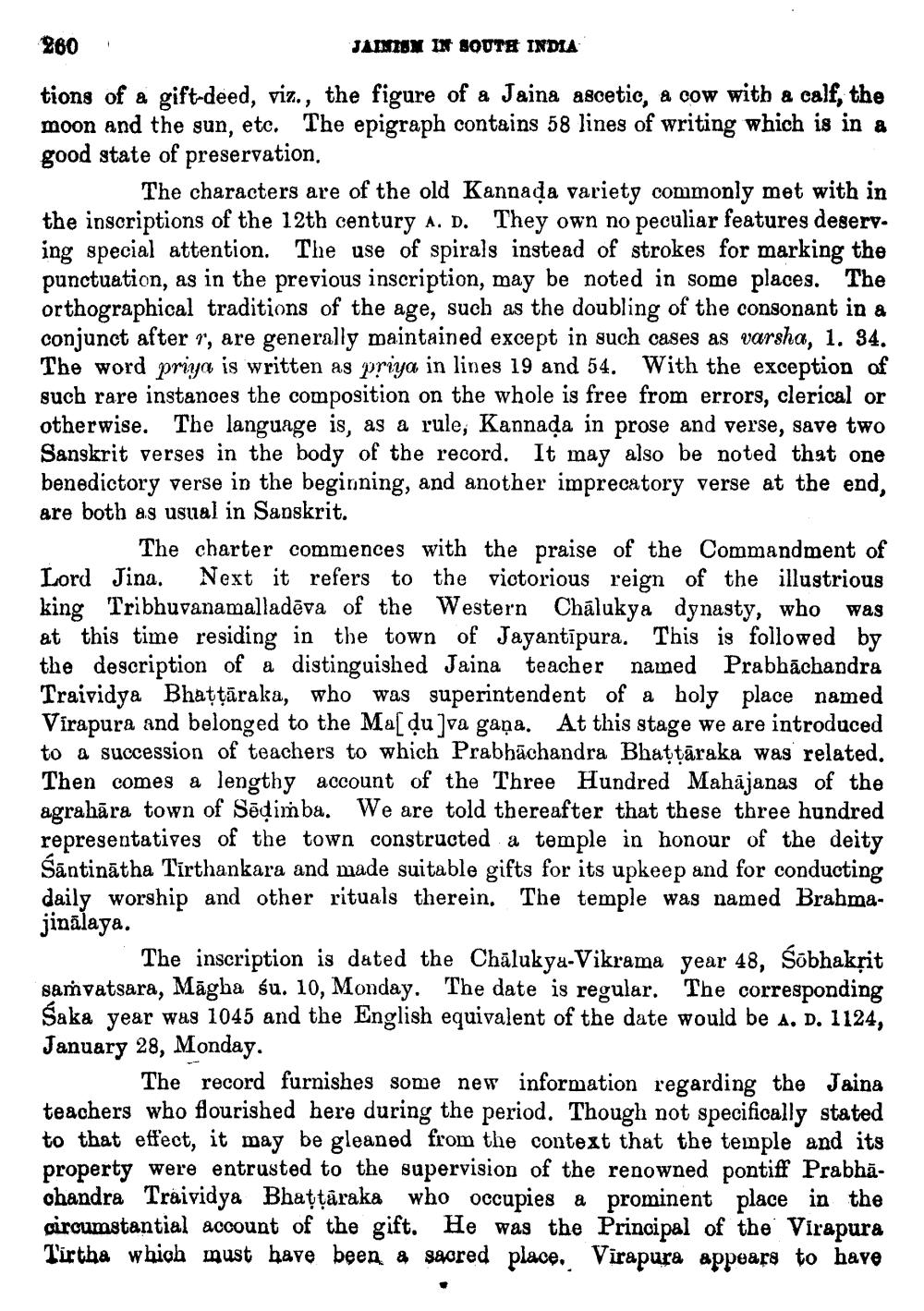________________
260
JAMIIN IN SOUT# INDIA
tions of a gift-deed, viz., the figure of a Jaina ascetic, a cow with a calf, the moon and the sun, etc. The epigraph contains 58 lines of writing which is in a good state of preservation.
The characters are of the old Kannada variety commonly met with in the inscriptions of the 12th century A. D. They own no peculiar features desery. ing special attention. The use of spirals instead of strokes for marking the punctuation, as in the previous inscription, may be noted in some places. The orthographical traditions of the age, such as the doubling of the consonant in a conjunct after r, are generally maintained except in such cases as varsha, 1. 34. The word priya is written as priya in lines 19 and 54. With the exception of such rare instances the composition on the whole is free from errors, clerical or otherwise. The language is, as a rule, Kannada in prose and verse, save two Sanskrit verses in the body of the record. It may also be noted that one benedictory verse in the beginning, and another imprecatory verse at the end, are both as usual in Sanskrit.
The charter commences with the praise of the Commandment of Lord Jina. Next it refers to the victorious reign of the illustrious king Tribhuvanamalladēva of the Western Chalukya dynasty, who was at this time residing in the town of Jayantīpura. This is followed by the description of a distinguished Jaina teacher named Prabhāchandra Traividya Bhattāraka, who was superintendent of a holy place named Virapura and belonged to the Mal du ]va gaņa. At this stage we are introduced to a succession of teachers to which Prabhāchandra Bhattāraka was related. Then comes a lengthy account of the Three Hundred Mahājanas of the agrahāra town of Sõđimba. We are told thereafter that these three hundred representatives of the town constructed a temple in honour of the deity śāntinātha Tirthankara and made suitable gifts for its upkeep and for conducting daily worship and other rituals therein. The temple was named Brahmajinālaya.
The inscription is dated the Chālukya-Vikrama gear 48, Śõbhakřit samvatsara, Māgha su. 10, Monday. The date is regular. The corresponding Saka year was 1045 and the English equivalent of the date would be a. D. 1124, January 28, Monday.
The record furnishes some new information regarding the Jaina teachers who flourished here during the period. Though not specifically stated to that effect, it may be gleaned from the context that the temple and its property were entrusted to the supervision of the renowned pontiff Prabhāchandra Traividya Bhattâraka who occupies a prominent place in the circumstantial account of the gift. He was the Principal of the Virapura Tirtha which must have been & sacred place. Virapura appears to have




